
Remembering Patrick Nagatani
Guest blogger Zoe Dong '18J recently graduated from Smith College with a major in studio art. She was a Student Assistant in the Cunningham Center for the Study of Prints, Drawings, and Photographs.
This fall, Japanese-American photographer and collage artist Patrick Nagatani passed away on October 27, 2017 after a struggle with colon cancer. A nationally respected photographer with work held in museums across the country, Nagatani’s work dealt with themes of science, nuclear power, Japanese-American history, and New Mexican culture. He represented and explored these themes through otherworldly images, saturated prints and flat collages that were magical and sometimes unnerving. Though Nagatani’s work can be subtle and humorous at times, his political commentary is sharp and this pairing of social critique with fantasy is thoroughly engaging.
Nagatani was born in 1945 in Chicago to two Japanese-American parents. Both his mother and father were held in Japanese internment camps during World War II, and his extended family’s hometown was Hiroshima; he was born just days after the city was decimated by the atom bomb. Much of Nagatani’s work speaks to that same horrible legacy of nuclear war that America enacted on Japan, a power the country holds the possibility to enact still. Although he was never technically trained in photography, Nagatani started creating photographs when he was 31 and went on to receive an MFA from UCLA. He was a professor of photography at the University of New Mexico from 1987 to 2007.
The work of Nagatani’s that initially spoke to me was 'Effects of Nuclear Weapons', Bradbury Science Museum, Los Alamos National Laboratory, New Mexico (1990).To create this work, Nagatani overlaid several images on top of each other, but the word “collage” seems almost too trivial to apply here. Nagatani has placed Japanese children’s faces and the buckets that carry their ashes on top of a photograph of an American science museum; the exhibit coolly displays information about the scientific effects of nuclear war with no apparent mention of the actual loss of human life. It’s a tragic, biting accusation towards the American public and government who didn’t and still do not acknowledge the murders of a perceived “Other” from thousands of miles away by the power of nuclear bombs.
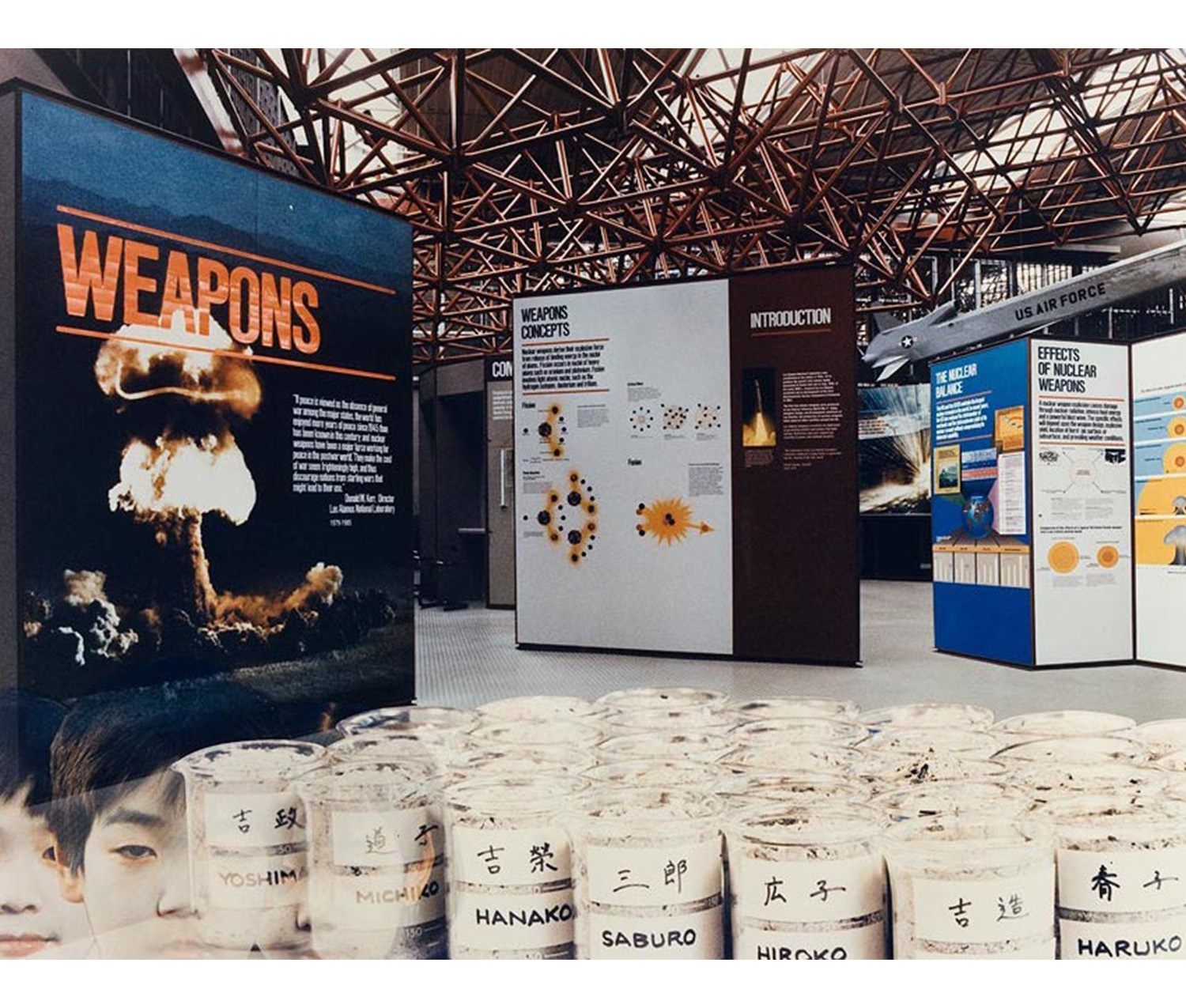
Nagatani, Patrick. American, 1945–2017. 'Effects of Nuclear Weapons', Bradbury Science Museum, Los Alamos National Laboratory, New Mexico, 1990. Ilfocolor print. Gift of Nicole Moretti Ungar, class of 1982, and Jon Ungar. SC 2007.60.39.
This work is part of the series Nuclear Enchantment,which the Cunningham Center owns several works from. The series, through representations of different New Mexico landscapes, warns of the dangers of nuclear power and, occasionally with grim comedy, highlights the strangeness in America’s normalization of it.
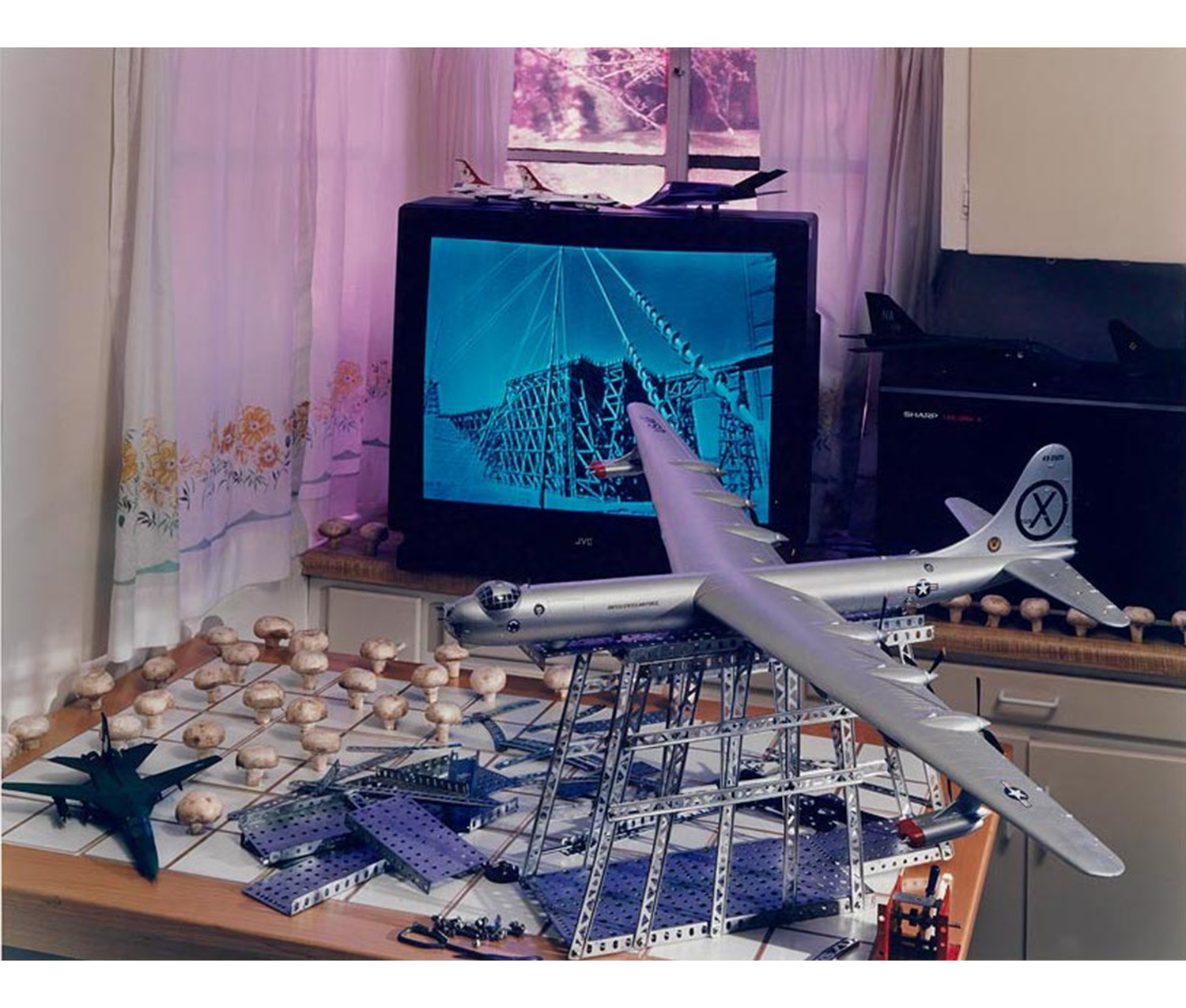
Nagatani, Patrick. American, 1945–2017. Simulation/Simulation, the Trestle, Nuclear Effects (Electromagnetic Pulses), Simulation Facility, Air Force Weapons Laboratory, Kirtland A.F.B. Albuquerque, New Mexico from Nuclear Enchantment, 1990. Ilfocolor print. Gift of Nicole Moretti Ungar, class of 1982, and Jon Ungar. SC 2010.67.35.
Said Nagatani in an artist’s statement, “Are we a society so blinded by the powers of science that we will continue to support a destructive industry rather than seeking alternative solutions? Many of the photographs in Nuclear Enchantment are of actual sites presided over by a cast of ancient mythic figures...I want them to remind us of the spiritual poverty of the technical age.” In some images he incorporates parts of work from the famed 19th century woodblock artist Hiroshige, noting that his art “commented on Japan's transition from ancient Shintoism to Westernization - a path that ultimately led to Hiroshima.”
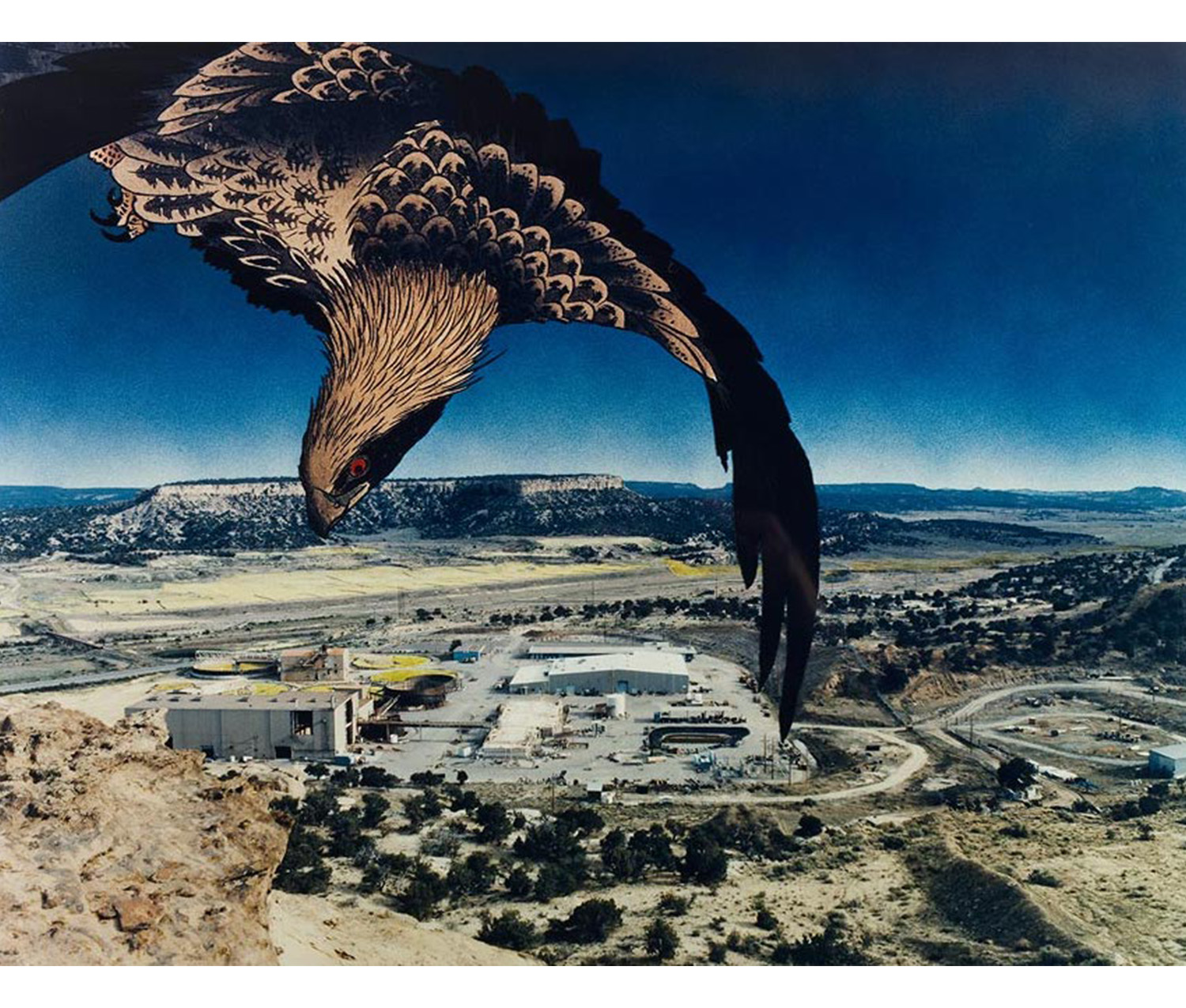
Nagatani, Patrick. American, 1945–2017. Golden Eagle, United Nuclear Corporation Uranium Mill and Tailings, Churchrock, New Mexico, 1990. Ilfocolor print. Gift of Nicole Moretti Ungar, class of 1982, and Jon Ungar. SC 2007.60.40.
The Cunningham Center also owns the fascinating series Nagatani/Ryoichi Excavation,a surreal series that takes an elaborate, detailed look at what a fictional archaeologist’s findings might be. Nagatani worked on Hollywood productions, creating models for films such as Blade Runner and Close Encounters of the Third Kind. He used these model-making skills to create the intricate images that are so cunningly done they resemble fantastic hoaxes, shown as “evidence” of a secret, lost time when people worshiped cars. Of the project, Nagatani said “my interest [lies] in testing the realities that can exist within the realm of photography and physical documentation… I am interested in the potential of photography to tell a story.” The complexity of the narrative is striking, as is the technical and artistic skill in creating the images.
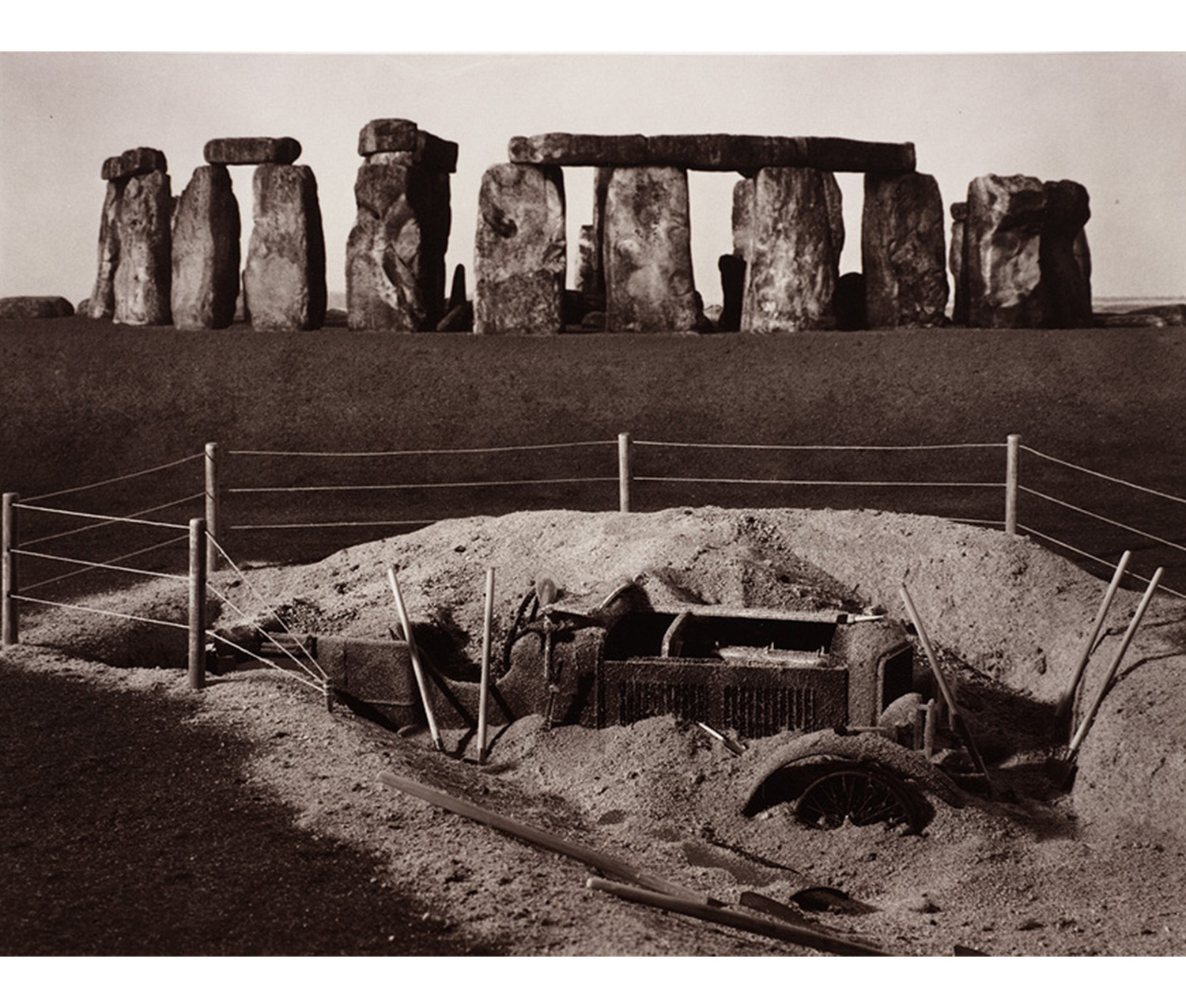
Nagatani, Patrick. American, 1945–2017. Bentley, Stonehenge, Salisbury Plain, Wiltshire, England, from Ryoichi Excavations, 1987-2001. Toned gelatin silver print. Gift of Nicole Moretti Ungar, class of 1982, and Jon Ungar. SC 2006.56.26.
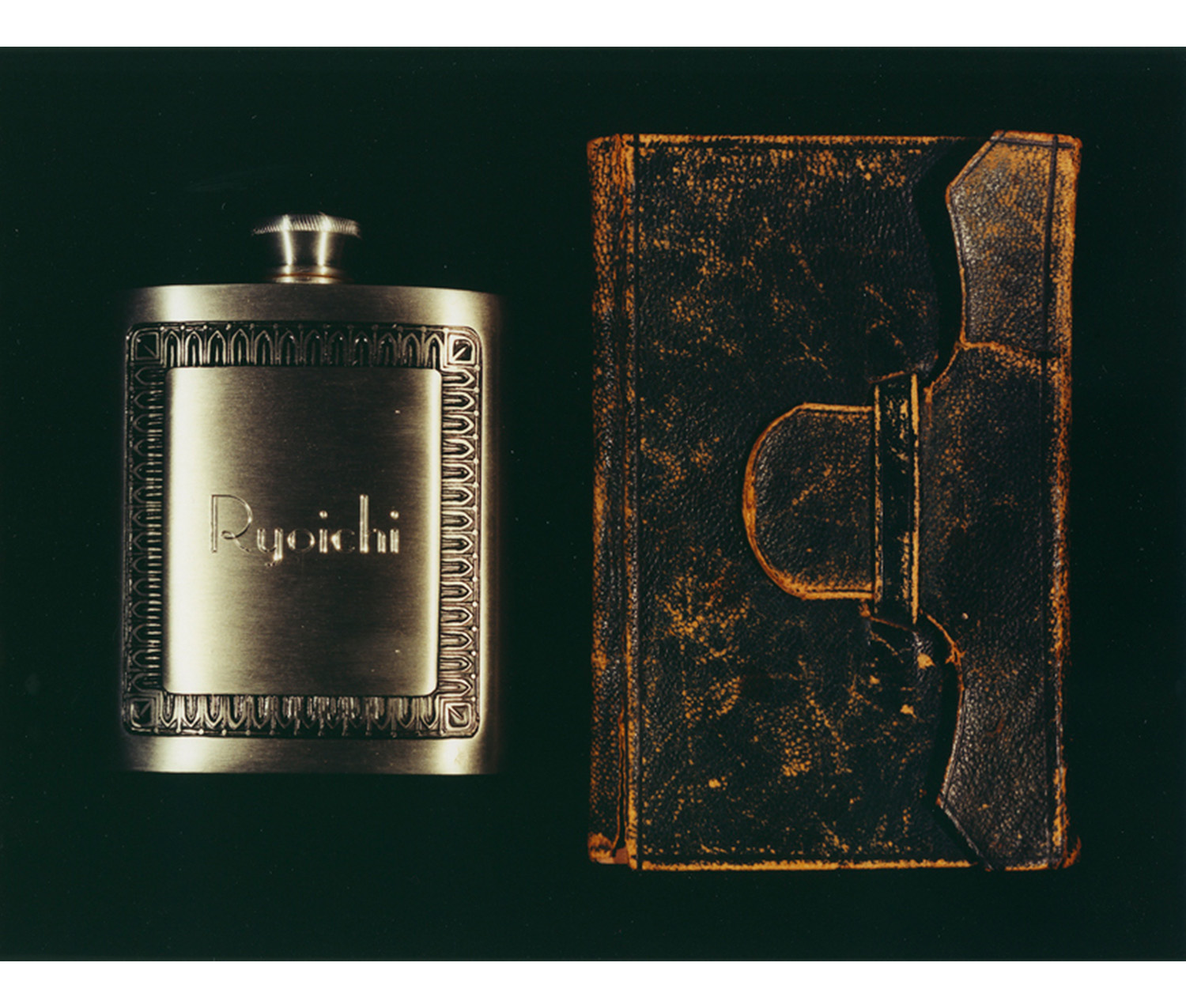
Nagatani, Patrick. American, 1945–2017. Ryoichi's Flask and Journal from Ryoichi Excavations, 2001. Chromogenic (Fuji Crystal Archive) print. Gift of Nicole Moretti, class of 1982, and Jon Ungar. SC 2011.71.41a.
Patrick Nagatani will be remembered as a gifted photographer and as a creative storyteller. His talent for creating fantasies with real political heft and thought was a unique one, and his confident, strange images reflect that.
Take a look at his works in the Cunningham Center collection and visit to see for yourself.
Sources:
https://www.artforum.com/news/patrick-nagatani-1945-2017-72325